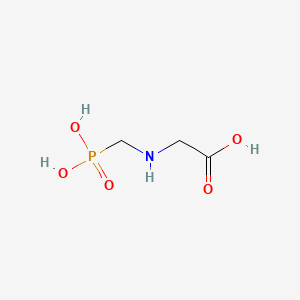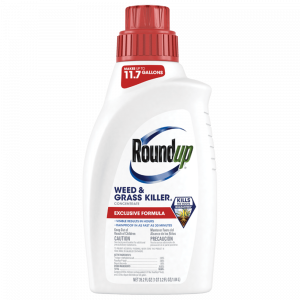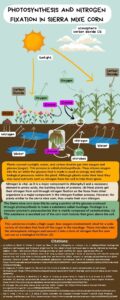Glyphosate – Corporate Interests, Human Health, and Scientific Misconduct
Introduction
One often overlooked role of our government is in the regulation of food safety. In a society dependent on grocery stores and industrial agriculture, we rely on the government to ensure that our food is safe to eat. In the public conversation regarding food safety, a commonly recurring question is if the use of certain pesticides and herbicides is truly safe. One such herbicide that is more frequently questioned is glyphosate. Despite being in use for over 40 years and being one of the most scrutinized and widely used herbicides of the modern day, it can be frustratingly difficult to find a definitive answer over whether glyphosate is or is not dangerous to human health. This article seeks to explain what glyphosate is, ponder the ethical dilemmas surrounding glyphosate through the framework of Lonergan’s Generalized Empirical Method (GEM) and Catholic Intellectual Tradition (CIT), and explore how large corporations engage in scientific misconduct to preserve their profit margins at the expense of consumer wellbeing and public trust in science.

The Ethical Framework
Lonergan’s GEM framework follows four steps: experience, understanding, judgement, and decision1. In the following sections, experience and understanding will be applied to the herbicide glyphosate by establishing what glyphosate is, how its herbicidal pathway functions, and exploring its history over decades of use. Questions pondering what effects glyphosate may have on human health will be addressed by looking at research that has been done into the matter. Understanding will be further discovered by reviewing the scientific efficacy of the research and any additional ethical implications of glyphosate. The information discussed throughout the paper will be applied to create a judgement regarding glyphosate, which will lead to decisions regarding what actionable steps can be taken to address the issues presented.

What is Glyphosate?
Glyphosate (N-phosphonomethyl glycine) is a broad-spectrum herbicide used internationally across the agricultural industry. It targets all plants and is widely used because of its effectiveness as well as its apparent safety, as it is unable to target vertebrates as part of its herbicidal mechanism of action. Glyphosate functions by inhibiting the enzyme 5-enolpyruvylshikimate-3-phosphate synthase (EPSPS), which is an enzyme in the shikimate pathway that is responsible for synthesizing the amino acids phenylalanine, tyrosine, and tryptophan2. Key to the safety of glyphosate is that the shikimate pathway is present in plants, fungi, and prokaryotes, but not in vertebrates.
Glyphosate was discovered in the 1970s by a scientist working for the biotechnology company Monsanto (now Bayer). Monsanto quickly commercialized it, selling it to farms and homes as the herbicide Roundup with advertisements emphasizing its effectiveness and safety. In 2015, the International Agency for Research on Cancer (IARC) moved glyphosate into the category “potentially carcinogenic to humans”, stirring public concern surrounding the chemical3. This decision was motivated by several lawsuits made against Monsanto by farmers alleging the glyphosate caused them to develop non-Hodgkins lymphoma, a form of blood cancer4. Amidst the lawsuits, Monsanto was acquired by the German biotechnology corporation Bayer. Regulatory bodies such as the EPA have maintained that there are “no risks of concern to human health when glyphosate is used in accordance with its current label. EPA also found that glyphosate is unlikely to be a human carcinogen5.” Bayer has since paid out billions of dollars in settlements to the farmers suing them. While regulatory bodies and Monsanto uphold the safety of glyphosate, the court systems seem to find evidence that disagrees with this conclusion while demanding regulatory bodies to further scrutinize the offending chemical. The question then is what direction does the actual science point in?

Is Glyphosate Dangerous to Human Health?
As previously mentioned, the EPA currently upholds that glyphosate is not dangerous to human health. Other regulatory bodies including the European Commission have come to similar conclusions6. In addition to this, there is a myriad of scientific research spanning decades that indicates that glyphosate does not present a significant immediate danger to human health. However, there is also research that implies that glyphosate can have a more subtle effect on health, especially over an extended period of continuous exposure like what you might see on a farm. Glyphosate is not sold in its pure form – rather it is most commonly sold as the product Roundup, which is a combination of glyphosate and several surfactants. Surfactants are chemicals that allow glyphosate to more easily cling to plants when it is sprayed on. Notably, most surfactants have not received nearly the amount of scrutiny and study that glyphosate has. It is a possibility that the surfactants in Roundup or an interaction between the surfactants and glyphosate could be a possible carcinogen. There is some evidence indicating that the surfactants in Roundup are genotoxic7. Additionally, while glyphosate does not directly affect vertebrates, it does work on several prokaryotes, including some of the bacteria that comprise the gut microbiome, which could lead to unintended health consequences over an extended period2.
A notable problem when researching glyphosate is an abundance of research that is directly contradictory to other research done on the same subject. As it turns out, a large contributing factor for this headache is scientific misconduct on the part of Monsanto.
A History of Scientific Misconduct in the Private Sector
Scientific research exists in both the public and private sectors. However, where the public sector has protocols in place for punishing scientific misconduct, such barriers aren’t always as prevalent in the private sector. Research funded by a specific company to find a specific result may be biased towards the preferred outcome, and results and data can be manipulated to hide unwanted results. In the case of Monsanto, the corporation has actively ghostwritten papers defending glyphosate and advocating for its safety. This involves hiring writers to create papers that are favorable towards the herbicide and then publishing the papers using the name of academics they have solicited permission from. These academics that the papers are published under typically had little to no involvement in actually writing the paper. Monsanto also has internal documents revealing communications with higher up staff of certain journal publishers, showing a willingness to interfere in the publishing and peer review process. Monsanto has routinely been shown to be behind papers with the explicit intention of defending glyphosate, rather than accurately reporting and analyzing data. The company has flooded the scientific space with research that does not uphold the standards of ethical and nonbiased reporting of data9. When attempting to ascertain whether glyphosate is or is not dangerous to human health, one would have to not only focus on peer reviewed articles, but also research into whether those articles have any sort of trail back to Monsanto. It requires a level of scrutiny that makes research difficult to impossible for the average person.
Further Ethical Dilemmas Regarding Glyphosate
In addition to any possible effects on human health, glyphosate presents ethical concerns regarding its environmental effects as well as the business practices surrounding the chemical. As a broad-spectrum herbicide, glyphosate targets all plants including those not intended to be targets. Glyphosate is used in huge quantities in industrial agriculture, so there are legitimate concerns over how glyphosate runoff may affect the environment. In waterways, glyphosate runoff could contribute to dead zones along river banks, while the accidental elimination of certain plants could disrupt butterfly and pollinator populations10.

There are also concerns over the business practices of the company that sells the majority of glyphosate, Monsanto. Monsanto is also well known for engineering several GMO staple crops like field corn, soy, cotton, and rapeseed. These GMOs are engineered to be Roundup-Ready, which means that they are immune to glyphosate. This allows farmers to indiscriminately spray their farms for weeds in the middle of a growing season without killing their crops. The issue that emerges is that one company owns both the crop seeds and the herbicide the farmers need to use with those crops. This gives Monsanto a massive foothold in the agricultural industry, especially since there are no significant competitors in the regions that Monsanto operates in. In turn, Monsanto has huge control over the prices of their seeds and herbicide with very few market pressures regulating those prices. Placing this financial pressure onto local farmers can run them out of business, further consolidating farmland into the hands of a few wealthy companies while the cost gets passed down to the consumer.
On top of this, GMO plants immune to glyphosate can crossbreed with weeds and local flora that, combined with selective pressure favoring plants with mutations that make them more resistant to glyphosate, can result in the emergence of superweeds that are almost completely immune to glyphosate11.
Why Bother With Glyphosate?
While much of the focus so far has been on the potentially negative impacts of glyphosate, it is worth noting that compared to many herbicides that have had immediately negative impacts on humans and the environment, glyphosate is much safer in comparison12. Glyphosate has been in use for around 40-50 years and has shown not be immediately or overtly toxic to humans and the environment. As mentioned before, the chemical pathway glyphosate takes is not present in vertebrates. Glyphosate tends to decompose quickly in the environment, although the widespread use of the chemical has raised concerns over potential buildup13. Because glyphosate has been integrated into the GMO systems previously discussed, farmer are able to more effectively control weed growth on their farms without having to resort to tilling, a process used for weed management that is also known to “increase the likelihood of soil erosion, nutrient runoff into nearby waterways, and the release of greenhouse gases into the atmosphere14.” Although it is possible that the chemical has subtle, long-term effects on humans that haven’t surfaced until recent years, the fact that it has taken decades for problems to surface is another reason why usage of the chemical has become so popular and widespread.
An Ethical Review: Judgement and Decisions
By gathering information regarding glyphosate and exploring the context surrounding that information, the experience and understanding steps of Lonergan’s GEM framework have been thoroughly addressed. The next step is to make judgements regarding the compound. This step is made slightly more complicated due to the fact that glyphosate is ultimately just a chemical compound and agricultural tool, and the ethics surrounding it come down to how it has been and is being used. If glyphosate has any long-term negative health impacts, research into them has been stunted and obfuscated by decades of scientific misconduct by Monsanto. And even if glyphosate is perfectly safe, that doesn’t erase the potential health effects the other chemicals in Roundup and similar herbicides could have. Many people used Roundup so heavily because they were led to believe that the herbicide was safe by Monsanto, when in actuality the long-term consequences were somewhat unknown. The actions of Monsanto in poisoning the well of scientific research have only served to put human health at risk and erode public trust in science all for the massive profit they make from the herbicide.

When making a decision on how to address glyphosate, a sweeping ban of the substance is not fully supported by the scientific evidence, nor would it address the underlying issue of the matter. Glyphosate is not the first substance to face public scrutiny, nor is it the first substance that a major industry has engaged in scientific misconduct for. Rather, Monsanto’s effort to muddy scientific research was modeled after the tobacco industry, which famously engaged in heavy scientific misconduct and disinformation efforts to promote the use of cigarettes throughout the mid-1900s15. There are not enough protections in place to safeguard scientific research from being meddled with by private corporate interests. Researchers and regulators must be able to read scientific literature without fear of hidden corporate bias. This could result from journals holding more scrutiny towards topics heavy with corporate interests or by there being some kind of legal repercussion against companies that engage in scientific misconduct. Only then can one accurately evaluate the long-term health repercussions of glyphosate. To make a decision on how to regulate glyphosate, the truth of the chemical must be known, and to know the truth steps must be taken to prevent corporate entities from obfuscating it.
Catholic Intellectual Tradition
To further review the ethical implications of glyphosate, one can look at it through the lens of Catholic Intellectual Tradition (CIT). The actions of corporations in creating biased and misleading scientific data violate the directive of CIT to find truth through faith and science. If glyphosate has long-term health effects on human health, this will most likely effect farmers and their workers. If glyphosate has long-term environmental effects, the first people this will affect after farmers is the poor, who suffer the most when environmental damages seep into residential areas. This violates the CIT principle addressing human dignity. Beyond this, flooding the environment with a chemical that can have adverse effects on ecosystems goes against the role that humans play in being stewards of creation under CIT.
Conclusion
The long-term effects that glyphosate may have on human health and the environment remain somewhat unknown, not due to a lack of information, but rather an abundance of it. There is an incredible amount of research into glyphosate, but it is only consistent in how it contradicts itself at every turn. The dilemmas surrounding glyphosate act as examples of how under a capitalistic society, corporations are incentivized to make profit via whatever means necessary even at the expense of the consumer. It is the role of the government to place regulations on corporations to protect the interests of the general public. Until we are able to make significant reforms protecting the integrity of scientific research, public health and trust will continue to be undermined by corporate interests.
- Lonergan, Bernard | Internet Encyclopedia of Philosophy. (n.d.). Retrieved October 29, 2025, from https://iep.utm.edu/lonergan/ ↵
- Leino, L., Tall, T., Helander, M., Saloniemi, I., Saikkonen, K., Ruuskanen, S., & Puigbò, P. (2021). Classification of the glyphosate target enzyme (5-enolpyruvylshikimate-3-phosphate synthase) for assessing sensitivity of organisms to the herbicide. Journal of Hazardous Materials, 408, 124556. https://doi.org/10.1016/j.jhazmat.2020.124556 ↵
- IARC Monograph on Glyphosate. (n.d.). Retrieved October 8, 2025, from https://www.iarc.who.int/featured-news/media-centre-iarc-news-glyphosate ↵
- Schinasi, L., & Leon, M. E. (2014). Non-Hodgkin Lymphoma and Occupational Exposure to Agricultural Pesticide Chemical Groups and Active Ingredients: A Systematic Review and Meta-Analysis. International Journal of Environmental Research and Public Health, 11(4), 4449–4527. https://doi.org/10.3390/ijerph110404449 ↵
- EPA. (n.d.). Glyphosate. EPA. https://www.epa.gov/ingredients-used-pesticide-products/glyphosate ↵
- European Commission. (2025). Glyphosate. European Commission. https://food.ec.europa.eu/plants/pesticides/approval-active-substances-safeners-and-synergists/renewal-approval/glyphosate_en ↵
- Makame, K. R., Aljaber, Y., Sherif, M., Ádám, B., & Nagy, K. (2025). Genotoxic activity of glyphosate and co-formulants in glyphosate-based herbicides assessed by the micronucleus test in human mononuclear white blood cells. Toxicology Reports, 14, 102063. https://doi.org/10.1016/j.toxrep.2025.102063 ↵
- Leino, L., Tall, T., Helander, M., Saloniemi, I., Saikkonen, K., Ruuskanen, S., & Puigbò, P. (2021). Classification of the glyphosate target enzyme (5-enolpyruvylshikimate-3-phosphate synthase) for assessing sensitivity of organisms to the herbicide. Journal of Hazardous Materials, 408, 124556. https://doi.org/10.1016/j.jhazmat.2020.124556 ↵
- Glenna, L., & Bruce, A. (2021). Suborning science for profit: Monsanto, glyphosate, and private science research misconduct. Research Policy, 50(7), 104290. https://doi.org/10.1016/j.respol.2021.104290 ↵
- Davoren, M. J., & Schiestl, R. H. (2018). Glyphosate-based herbicides and cancer risk: A post-IARC decision review of potential mechanisms, policy and avenues of research. Carcinogenesis, 39(10), 1207–1215. https://doi.org/10.1093/carcin/bgy105 ↵
- Novotny E. (2022). Glyphosate, Roundup and the Failures of Regulatory Assessment. Toxics, 10(6), 321. https://doi.org/10.3390/toxics10060321 ↵
- Fogliatto, S., Ferrero, A., & Vidotto, F. (2020). Chapter Six – Current and future scenarios of glyphosate use in Europe: Are there alternatives? In D. L. Sparks (Ed.), Advances in Agronomy (Vol. 163, pp. 219–278). Academic Press. https://doi.org/10.1016/bs.agron.2020.05.005 ↵
- Kanissery, R., Gairhe, B., Kadyampakeni, D., Batuman, O., & Alferez, F. (2019). Glyphosate: Its Environmental Persistence and Impact on Crop Health and Nutrition. Plants, 8(11), 499. https://doi.org/10.3390/plants8110499 ↵
- Crop & Livestock Practices—Soil Tillage and Crop Rotation | Economic Research Service. (n.d.). Retrieved October 29, 2025, from https://www.ers.usda.gov/topics/farm-practices-management/crop-livestock-practices/soil-tillage-and-crop-rotation ↵
- Brandt, A. M. (2012). Inventing Conflicts of Interest: A History of Tobacco Industry Tactics. American Journal of Public Health, 102(1), 63–71. https://doi.org/10.2105/AJPH.2011.300292 ↵


